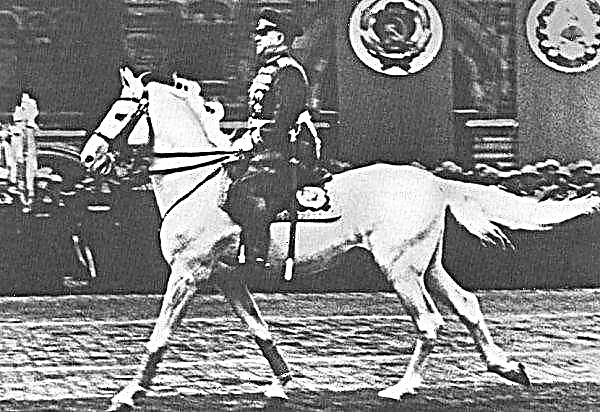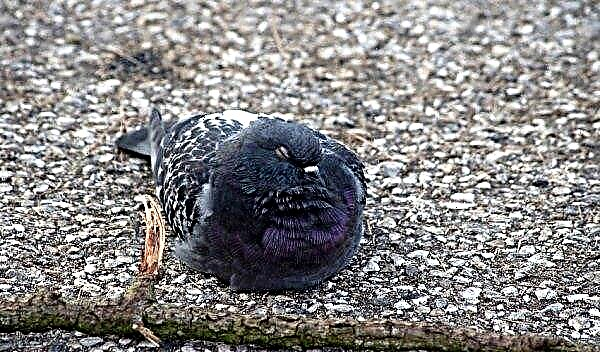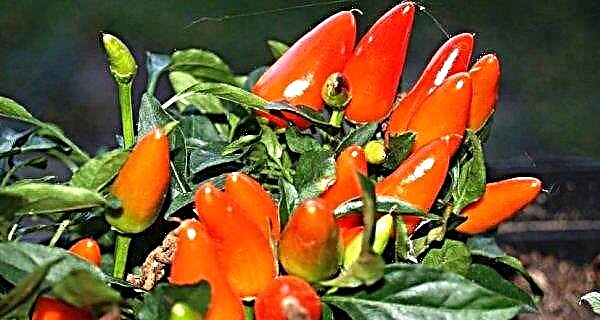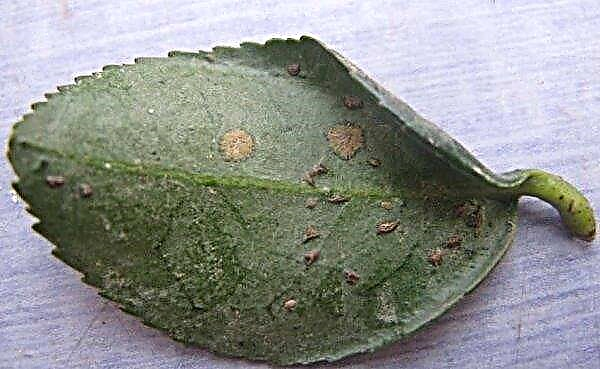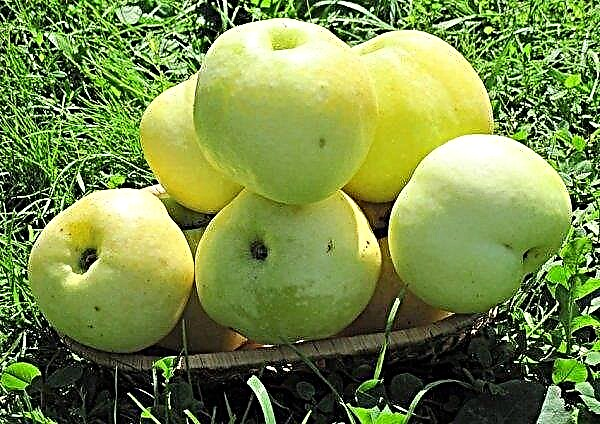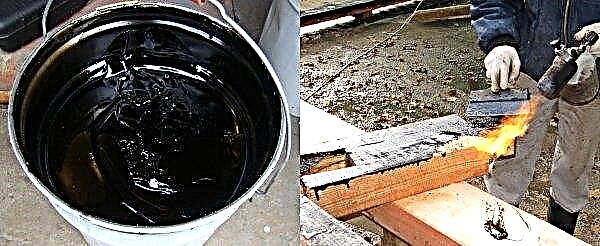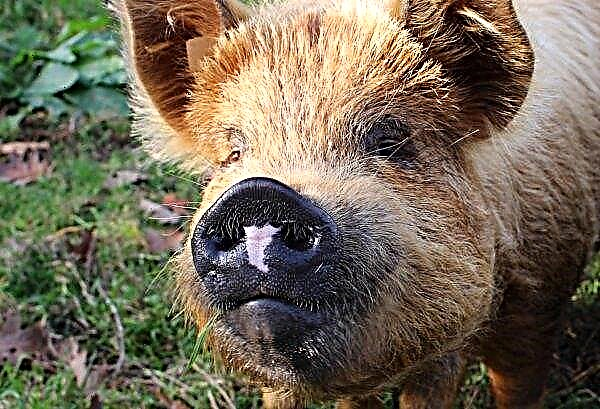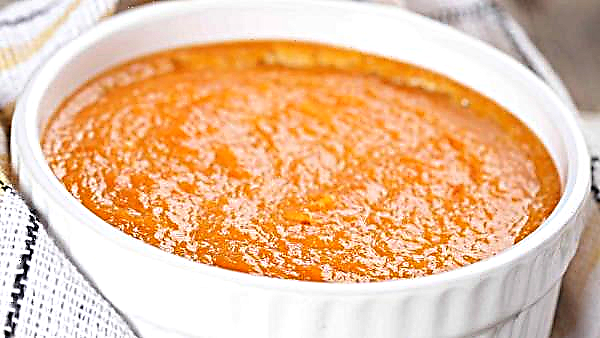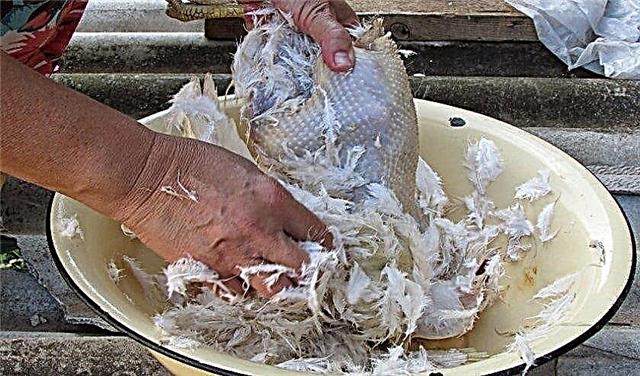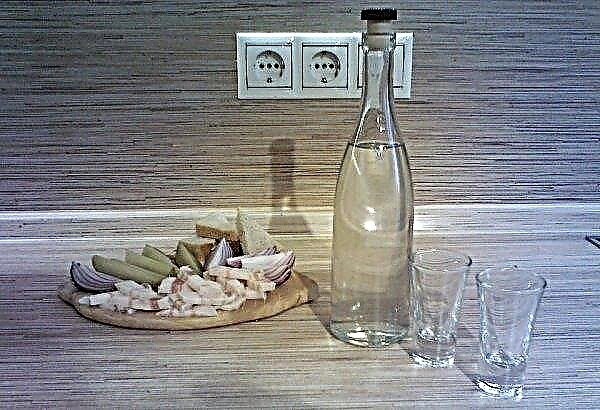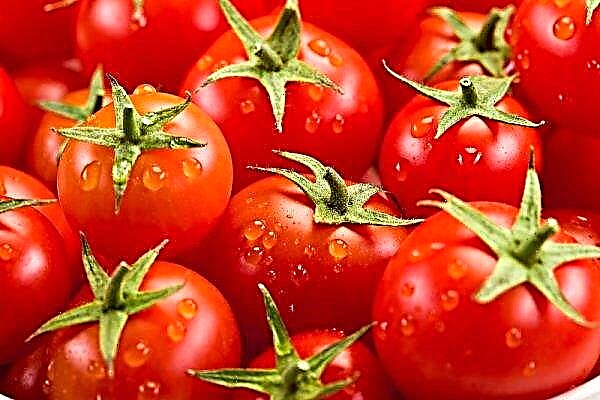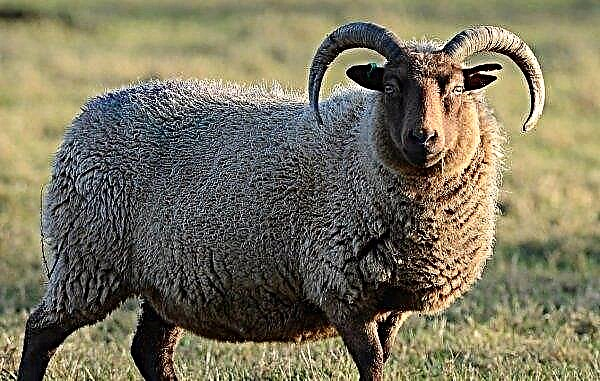The maintenance of chickens in the country is a responsible task, which consists in the proper arrangement of the home and walking yard, feeding and care. Let's look at how to properly breed chickens in a summer cottage and how to care for them.
Is it possible to keep chickens in the country
The arrangement of the chicken coop in the summer cottage has both pros and cons.The advantages include the following factors:
- home eggs and meat, the quality of which the owners control independently;
- low financial costs;
- the possibility of creating an additional income item from the sale of farm products.
 However, keeping chickens in the country has significant disadvantages. Among them are:
However, keeping chickens in the country has significant disadvantages. Among them are:- the need for constant presence for care and feeding;
- expenditure of efforts to build a chicken coop or financial costs for the purchase of a finished option;
- constant veterinary control.
What breed is best bred in the country
The main 2 types of chickens that are bred for the purpose of obtaining products are egg and meat. There is also an adjacent universal type, meat and egg birds. To each of them reckon on the list of different breeds. Many of them need special farm care, but some breeds can be grown in the country.
Did you know? In total, there are about 700 different breeds of chickens in the world, among which, in addition to the main "productive" species, fighting, vocal and decorative are bred.
Egg breeds
Egg or egg laying hens are bred for productive egg production. At home, you can grow the following breeds:
Meat breeds
Meat breeds include hens with a large body weight in adults. In particular, they distinguish:
Breeding chickens in the country
If you decide to raise chickens in the country, you need to carefully consider the conditions of their maintenance (a room with internal equipment, a patio for walking) and proper feeding in the summer and winter season.
Conditions of detention
The maintenance of chickens consists in creating comfortable conditions, maintaining the necessary microclimate and equipping the premises with nests, feeders and drinking bowls.
Important! Temperatures below 0 ° and above 38 ° C are considered critical. Under such conditions, chickens may suffer or die.
Home improvement
Properly equipped housing allows you to maintain optimal indicators of humidity, temperature and lighting. Rates for different seasons may vary.
- Humidity. The normal indicator of humidity in the chicken coop is 60–70%. Adequate humidity can be achieved by ventilation. It is made artificially, removing two pipes in the walls opposite to each other, they install automatic fans or ventilate in a natural way, opening the windows.
- Lighting. In the summer season, the chickens have enough natural light, which they receive when walking and due to the windows in the room. In winter, with a decrease in daylight hours, egg production rates can change for the worse. This factor is especially important for hen owners. To maintain the previous productivity, the owners should resort to artificial lighting, with which you need to "extend" the day to 11-12 hours. Modern systems allow you to automate the on and off light at the same time.
- Temperature. In summer, the average temperature should be +22 ... + 23 ° C. In hot weather, a properly equipped ventilation system will help reduce air heating. In winter, chickens can suffer from insufficiently warm conditions. The minimum room temperature should be +15 ° C. To heat the chicken coop in frost, it is necessary to warm the walls in advance with mineral wool and polystyrene foam, and also lay the litter in the form of sawdust, hay or straw on the floor. It is also necessary to install a heating system. For these purposes, you can use a boiler, potbelly stove, electric heating or infrared devices. You can also pre-install a "warm floor".
Video: arranging a chicken coop
Bird Walking Place
Chickens need a natural walk. In egg breeds, it affects the quality and quantity of eggs, and meat birds gain weight better. This process can be left to chance, but it is better to equip a walking patio. When arranging the territory, one should adhere to the basic rules:
- the courtyard should be fenced at least with a wire mesh about 2 m high, which will protect the birds from animal attacks and prevent them from escaping the chicken coop;
- it is advisable to locate the territory immediately near the house and away from the vegetable garden, garden and front garden;
- it should be a dry place not covered by tall trees, but it is better to partially cover it with a canopy to protect it from the scorching sun in the summer;
- if bushes or trees grow in the courtyard, it is better to fence them with a net.
Did you know? In the market of agricultural devices you can find car feeders and drinking bowls of different price categories. The simplest and cheapest ones will not allow you to leave for a long time and will cost the buyer $2-3; large and reliable devices will have to pay $100–150.
Installation and selection of feeders and drinking bowls
Important details of the chicken coop, which require hens of any breed, are feeders and drinking bowls. As drinking bowls, you can use plastic containers. For feeding grain it is better to choose wooden long feeders.
For wet foods, it is preferable to use plastic or metal vessels. A common option among the people is the alteration of old objects, for example, tires, which are cut in half. If the summer resident cannot be near the birds constantly or wants to automate the process, automatic feeders and drinking bowls come to the rescue. You can build them yourself or buy a ready-made factory version.
If the summer resident cannot be near the birds constantly or wants to automate the process, automatic feeders and drinking bowls come to the rescue. You can build them yourself or buy a ready-made factory version.
Place dishes with water and food for chickens in places where they will have free access. It should not be the far corners of the chicken coop, but it is better not to set the feeders with drinking bowls on the aisle.
Socket design
Unlike feed vessels, nests should be located in the far and dark corners of the room. This will allow the birds to lay eggs in a calm and comfortable environment. However, they should not be attached to the wall, as this will affect the strength.
On 10 chickens usually set 2-3 nests. This will be enough so that all the layers have enough space. The dimensions should be approximately 0.3 m * 0.3 m * 0.3 m, while the depth can be increased to 0.4 m.
There are several types of nests that are suitable for keeping chickens in the country. Among them:
- in the form of boxes;
- booths;
- with an egg collector;
- with a double bottom;
- shelving.
 Whatever option the farmer chooses, the bottom of the nest should be covered with straw, hay or sawdust. It is better to choose sawdust, because their chicken, unlike hay or straw, will not be able to rake over the side.
Whatever option the farmer chooses, the bottom of the nest should be covered with straw, hay or sawdust. It is better to choose sawdust, because their chicken, unlike hay or straw, will not be able to rake over the side.Features of feeding adult chickens
An important factor affecting the livelihoods and productivity of poultry is feeding. The chicken diet should include:
- dry feed (grain, seeds);
- greenery;
- vegetables (turnips, carrots, pumpkin);
- compound feed;
- animal products (whey, meat-bone and fish meal, eggshell and others);
- vitamin and mineral supplements (ash, limestone, chalk, shell rock, salt).
Important! Potatoes can only be given in boiled form. Avoid getting fresh and raw vegetables, green fruits and peels in the feed.
It is not recommended to feed the birds with products from the following list:
- salty fish;
- loaf;
- muffin;
- not fodder beets;
- greens from tomatoes;
- foods high in salt and sugar;
- celandine;
- citrus fruits and their peel;
- ragweed.

In summer
In the summer, chickens in the summer, if there is a territory for walking, are able to fully eat forbs and natural food in the form of worms and bugs. However, this food is not enough for them - birds need to be fed 2 times a day. The feed should include:
- grain (barley, oats, millet);
- mineral additives;
- additives of animal origin;
- vegetables;
- in the absence of walking or in addition to the main diet - grass, clover, nettle.
Water in hot weather does not require heating, but it is better not to leave it in direct sunlight. Nor should it be too cold. Optimum water for chickens at room temperature. Do not leave water in drinking bowls for a long time in order to avoid its pollution, it is better to change it periodically.
In winter
With the onset of cold weather, birds no longer have the opportunity to graze on their own. From this moment they need to be fed 3 times a day. It is advisable to add feed at the same time.
The basis of the chicken diet in winter should be:
- dry food (corn, wheat, buckwheat, flax seeds, sunflower seeds);
- boiled potatoes;
- additives of animal origin (whey and eggshell are especially important);
- mineral additives;
- herbal flour;
- compound feed;
- cake;
- wet feed.
 Food should be varied from the beginning of autumn, while it is important not to overfeed the birds. Drinking water should be given clean and warmed to room temperature. Too cold or hot water can harm chickens.
Food should be varied from the beginning of autumn, while it is important not to overfeed the birds. Drinking water should be given clean and warmed to room temperature. Too cold or hot water can harm chickens.How to raise chickens
In addition to the main meat or egg products, the farmer can raise chickens. After the chicken has hatched eggs, it is necessary to take the right measures regarding feeding and care.
Proper feeding
For feeding chickens use a special feeder with several compartments. The diet of chicks consists of:
- fortified feed;
- dairy products;
- hard boiled eggs;
- chopped greens;
- grated vegetables;
- croup;
- vitamins.
Important! White bread is strictly forbidden for consumption by chickens.
Food should initially be frequent, about 8 times a knock. As chickens grow older, their food changes.
| Age | Nutrition |
| 1-3 days | Hard-boiled eggs and grated on a fine grater. |
| 3-5 days | Boiled millet or chopped corn is added to the eggs. |
| 5-10 days | Finely chopped greens can be added to the diet. |
| 10-30 days | The number of meals is reduced to 4 per day. To the previous products are added a wet mix of mixed feeds, grated carrots, boiled potatoes, chopped eggshells, heat-treated and detailed fish and meat-and-bone products. |
| 1–4 months | The diet is enriched by the addition of bulk feed. The chicks begin to be transferred to "adult" food, then they eat a common feed. |
It is forbidden to feed the chicks with products from the general list of unauthorized products, raw meat and fish, stale greens. Water should be clean, preferably boiled. Do not forget to change it every few hours, as residues of feed and dirt get into it.
Care
Chickens can be kept in a box or box with a blank sheet of paper. It is better to use a newspaper for these purposes and periodically change it. The location of the home should be warm and ensure a comfortable existence for the chicks. After the 10th day, a special portable corral is constructed for them from the net, on which the drinking bowl and feeder cling. In this way, chickens can safely walk in the wild. If the chicks are raised without chicken, it is necessary to provide them with the proper temperature. In the early days it should be +35 ... + 36 ° C. Within 3 months, the temperature should be lowered to +18 ... + 20 ° C, comfortable for ordinary chicken. For heating chickens I use special devices that ensure safety of the entire brood.
If the chicks are raised without chicken, it is necessary to provide them with the proper temperature. In the early days it should be +35 ... + 36 ° C. Within 3 months, the temperature should be lowered to +18 ... + 20 ° C, comfortable for ordinary chicken. For heating chickens I use special devices that ensure safety of the entire brood.
Vaccination
To avoid infection with dangerous diseases, chickens are vaccinated from the first days according to the schedule. Vaccination may also be necessary only in hazardous areas or where there has recently been an outbreak.
| Age | Disease |
| First day | Marek's disease, infectious bronchitis. |
| 7 days | Gamboro disease (when managing a house in an epidemiologically disadvantaged place). |
| 14 days | Infectious bronchitis (revaccination). |
| 21st day | Gamboro disease (planned or revaccination depending on the place of residence), Newcastle disease. |
| 25th day | Infectious laryngotracheitis (when managing a house in an epidemiologically disadvantaged place). |
| 1 month | Infectious bronchitis (revaccination). |
| 40th day | Gumboro's disease (revaccination). |
| 70 days | Infectious Encephalomyelitis |
| 3 months | Infectious laryngotracheitis (revaccination during housekeeping in an epidemiologically disadvantaged place). |
| 4 months | Egg-laying syndrome, infectious bronchitis (revaccination), reovirus infection, Gumboro disease (revaccination), Newcastle disease (revaccination). |
Frequent diseases of chickens and their prevention
Even in the conditions of summer cottage isolation, chickens can be susceptible to certain diseases. The following are included in the list of frequent and dangerous diseases:
- fleas
- Gumboro disease;
- Marek's disease;
- Newcastle disease;
- helminths;
- infectious bronchitis;
- coccidiosis;
- colibacillosis;
- chicken pox;
- laryngotracheitis;
- mycoplasmosis;
- pasteurellosis;
- feather tick;
- peroids;
- bird flu;
- poohooters;
- pullorosis;
- salmonellosis.
For prevention, you must adhere to the following rules.
- Timely vaccination helps prevent infection from certain diseases.
- It is important to keep the chicken house clean, periodically disinfect, check the litter and wash the dishes.
- Feed should be fresh and of high quality. It is not advisable to buy products from unverified or unreliable manufacturers.
- Water needs to be changed often enough to avoid the ingress of harmful particles and dirt.
- It is necessary to maintain the correct microclimate, monitor humidity and temperature.
- Sick chicken should be isolated from the livestock and start therapy in a separate room. The chicken coop with the rest of the birds is disinfected.
 Breeding chickens in the country is quite realistic and feasible, if thoroughly prepared for this. Equip the premises for the chicken coop and the territory for walking, monitor feed and water, properly care for chickens, do not forget about disease prevention, and then poultry will be productive and healthy.
Breeding chickens in the country is quite realistic and feasible, if thoroughly prepared for this. Equip the premises for the chicken coop and the territory for walking, monitor feed and water, properly care for chickens, do not forget about disease prevention, and then poultry will be productive and healthy.

